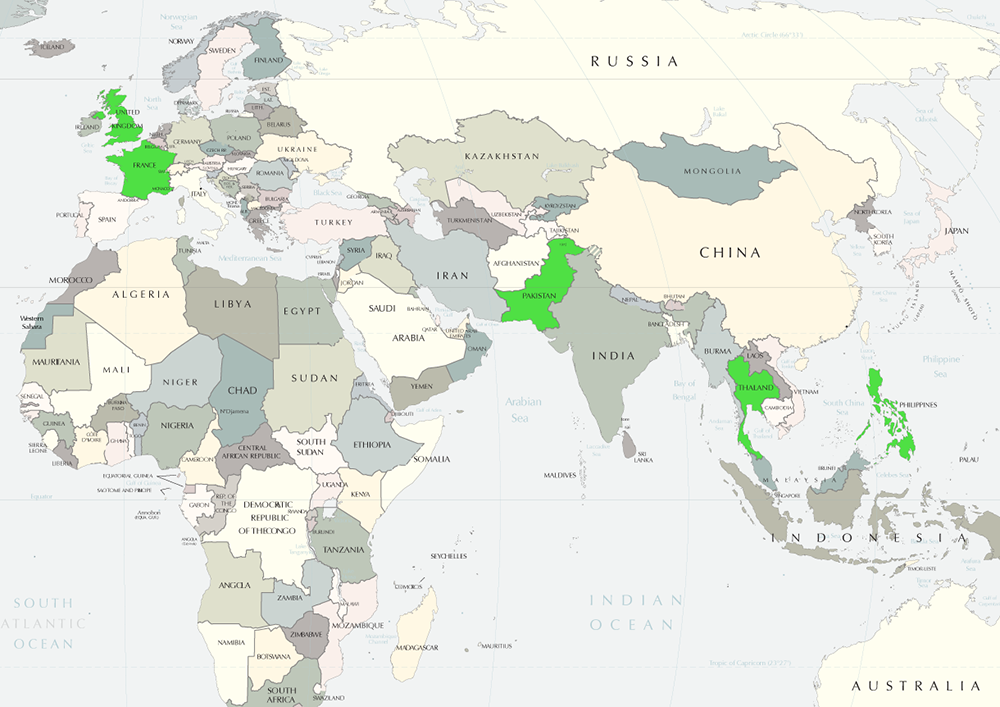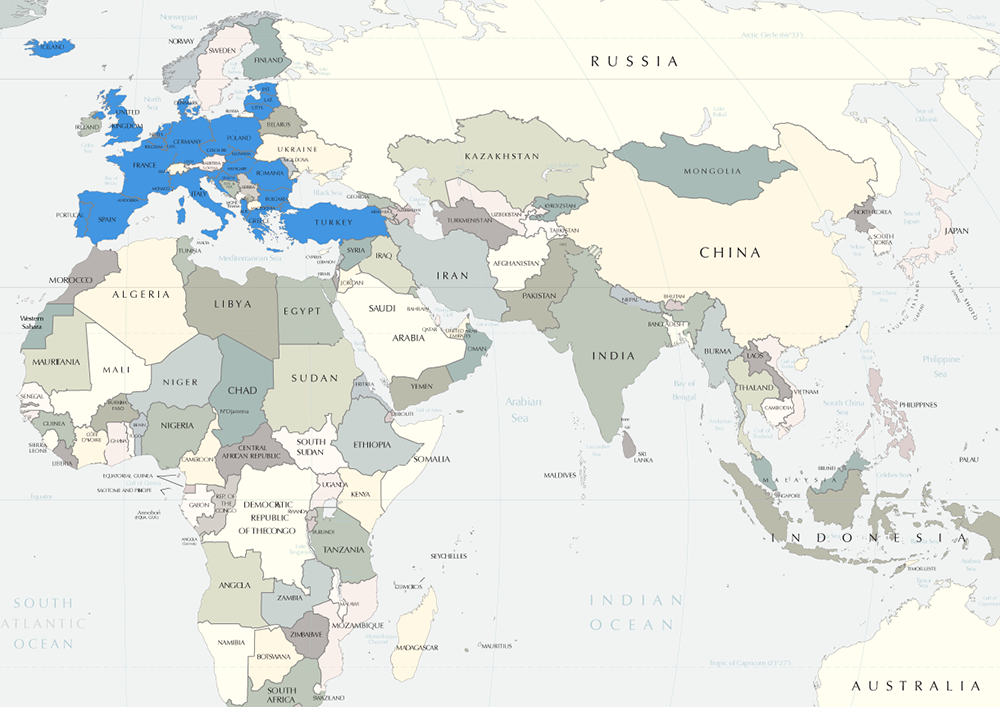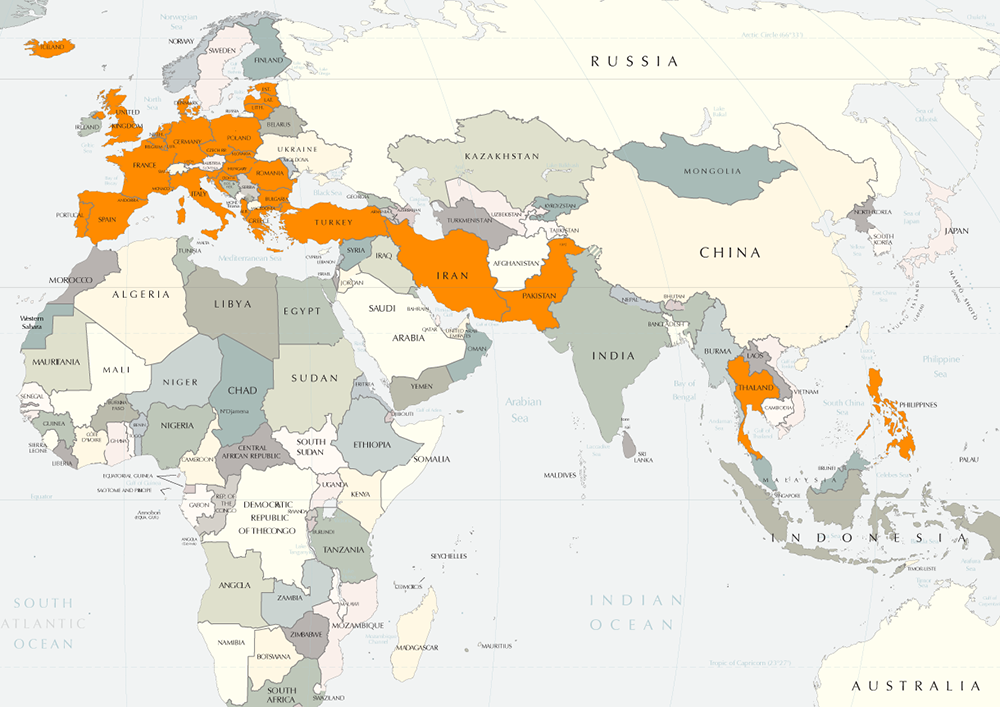Chapter Three: The Middle East and the Impact of Imperialism
The U.S. and Post-Bandung Imperial Dominance
Key Event: Bandung Conference of 1955
By 1955 most colonies had gained independence. The Conference of Bandung in 1955 was a major turning point, which lead to the non-Aligned movement of newly independent countries who wished to resist Soviet and U.S. pressure to align. It was organized by newly independent countries to discuss how to move forward. Its purpose was to discuss two main issues:
- With formal colonial structures gone, internal results of the colonial dynamic sometimes became the worst enemy.
- Economic relations between rich nations and poor nations, and trade agreements continued to privilege powerful countries and maintain this dynamic, regardless of the official changes in government.
This was the beginning of the non-aligned movement, or the agreement between formerly colonized countries not to join alliances with either superpower.
Pioneers of the non-Alignment movement were Gamal ‘Abdul Nasser of Egypt (see p. 56), Tito of Yugoslavia, Sukarno of Indonesia, and Dawood Khan of Afghanistan. During the Cold War, especially in the 1960’s and 1970’s, it was one of the most significant global movements and the major political weapon for resisting alliance with the superpowers of the time. Nasser was a major proponent of nonalignment, implementing it according to his “positive neutrality” policy in Egypt.
Bandung transformed the history of imperialism dramatically at the same time the U.S. and Soviet Union began vying for global power. Independence and sovereignty became acknowledged rights for every nation state, and an international system was born outside of the imperial system of the past. At the Containment Policy the U.S. implemented to ward of Soviet power during the Cold War created a situation in which newly independent states needed to assert their sovereignty. At the same time groups worldwide continued to bear the effects of colonization, whether former colonies attempting to maintain independence, or minoritized groups and stateless nations continuing their struggle for sovereignty. This section takes an example from Egypt to illustrate these shifting power dynamics. Eisenhower’s policies reflected both a global strategy to gain power, via Soviet Containment, and a respect for sovereignty with regard to the Suez Canal in Egypt.
An example of the colonial dynamics which continued after Bandung, and the assertion of sovereignty by a Middle Eastern country is the conflict over the Suez canal. In 1956 Egypt’s president Nasser nationalized the Suez canal, which had been built in cooperation with France and Britain. As the canal had been a major investment on the part of the French and the British, and it formed a border with Israel, this was seen as an act of aggression by those countries. Israel quickly invaded, receiving the support of France and Britain. Eisenhower, however, sided with Nasser on the grounds that the international community had an obligation to respect the sovereignty of independent nations. Nasser also had the motive of protecting U.S. influence and prevent the Soviets from dominating Egypt, and potentially other Arab states in the region (U.S. Office of the Historian).
Colonial dynamics were shifting toward the superpower competition at that point, and were reflected in the Middle East as pressure to capitulate to one side or the other. The Containment Policy meant that they had to choose whether or not to ally themselves with the U.S. through an international treaty. The most famous of those treaties, the North Atlantic Treaty Organization, or NATO, included Turkey as a member. The Baghdad Pact, which became CENTO after Iraq pulled out, and the South East Asian Treaty Organization (SEATO) were also significant in the region.
Previously, after the first World War, U.S. president Wilson had intervened on the part of Middle Eastern nations in the name of sovereignty with his “14 points,” and theories which led directly to the League of Nations (later, the United Nations). There are differing perspectives on whether the U.S. effectively promoted decolonization, or whether these developments led to a form of neocolonialism, or neo-imperialism. The mandate system that resulted from the creation of the League of Nations, mentioned previously, is certainly an example of the colonial dynamics we are discussing in this chapter.
Maps of the Alliances of the Cold War Era, Visual of “Containment”
SEATO Alliance:

CENTO Alliance (previously the Baghdad Pact):

NATO Alliance:

Countries in all Containment Alliances:

U.S. foreign policy played a prominent role in the events outlined in this e-book. The 20th century saw the U.S. go from an isolationist country to an influential world player, and what some consider a neo-imperial power. Regardless of how one interprets the meaning of these events, U.S. foreign policy became de facto global rules of engagement. From Wilson’s 14 points and League of Nations, to Truman’s doctrine of containment, to Eisenhower’s implementation of it, the U.S. started to lead global political developments.
The U.S. became increasingly influential on the global economic front, as well. This is indicated by the predominance of U.S. citizens leading such organizations as the World Bank, the International Monetary Fund, the Organization of Economic Cooperation and Development, and the International Energy Agency (Stiglitz,2006). A country must meet the standards of those organizations if they are to be a full participant in the global economy, or global energy trade business.
The Cold War between the U.S. and the U.S.S.R. was the defining global dynamic of the second half of the 20th century. Afghanistan was the lynchpin in the the Middle East between the two superpowers. The occupation of Afghanistan by the U.S.S.R. was its foray into territorial conquest during the cold war era, and was also an attempt to reach a warm water port (Payind,1989). The was a perennial pre-occupation for Russia, as well, and could be seen as a continuation of what Kipling called “The Great Game”.
